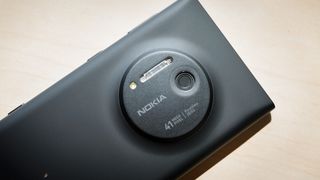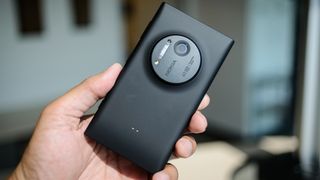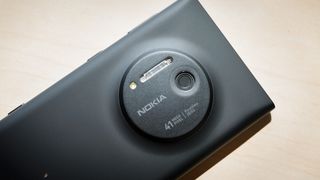Can the Lumia 1020 take on a compact system camera?
How does the Lumia 1020 camera compare to the Olympus E-PL5 - and to the iPhone 5?

The Nokia Lumia 1020 may have changed the mobile photography landscape, but is it going to cause any disruption in the compact system camera class, too? If you aren't already familiar with the Lumia 1020's camera, it's basically a point-and-shoot or compact camera stuffed into a smartphone body. Sort of.
After reviewing Nokia's latest flagship smartphone, we were left wondering why the Finnish company would put a 41MP camera sensor into a device intended for messaging and making phone calls. Is it just to give phone a big number on a spec sheet? Or is it intended to replace your compact or compact system camera?

We've decided to put it up against the iPhone 5, which has a respectable 8MP shooter on board, and the Olympus E-PL5 - a nice compact system camera loaded with features and really good image quality.
The first comparison is obvious. The iPhone 5 is a smartphone that you'll find in most hands when you're out and about, and its camera has always performed well against other smartphones. Pitting it against the Lumia 1020 seems fair.
We were tempted to compare the 1020 to a full-frame DSLR given the smartphone's incredibly high megapixel count. Nokia also claims in its Lumia 1020 white paper that some of the features on the 41MP PureView camera were only found on DSLRs. But regardless of pixel count, a full-frame sensor from the likes of Nikon or Canon would stomp on any tiny, smartphone camera sensor any day of the week.

Instead, we decided to go with the Olympus E-PL5 because it seems more in line with what the Lumia 1020 is trying to be: a compact camera replacement. The Lumia's size and portability is much closer to a compact camera than a DSLR, and like many compact cameras, it has a fixed focal length lens. It's worth noting, however, that the E-PL5 is a micro four-thirds compact system camera that supports interchangeable lenses.
The E-PL5 has a 16MP sensor - a far cry from the Nokia's 41MP unit - but the sensor is much larger than the one found in the 1020. So we're going to find out whether megapixels trumps sensor size in this comparison, although if you're familiar with cameras and camera technology, you may already have your money on the bigger sensor.
Get daily insight, inspiration and deals in your inbox
Get the hottest deals available in your inbox plus news, reviews, opinion, analysis and more from the TechRadar team.
In this image comparison, we're going to take a look at overall image quality, which takes into account color, contrast, details and dynamic range. We're also going to consider performance. How long does it take to fire up the device and snap a photo, and how quickly can you snap photos in rapid succession?
Another area we'll consider is low-light performance and how well each of the three devices handles noise.
Because of Nokia's claims, we're going to push each camera as far as they will go, even if one camera has capabilities that another doesn't (e.g. aperture controls and high ISO settings). This isn't going to be the sort of comparison where we try to get each camera's settings as close to each other as possible, then pixel-peep the photos. There will be a little bit of that, but for the most part we're going to push these cameras to see whether any can be considered a replacement for the other, or if they're truly in separate classes.

A key Apple app is rumored to be getting a major upgrade in macOS 15

Intel's formidable 288 core CPU now has a proper family name — Granite Rapids and Sierra Forest are Xeon 6 processors but is it just becoming too confusing?

Get six months of Disney+, Hulu, and ESPN+ free at Verizon with this epic deal
Most Popular

